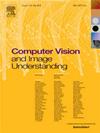Dual stage semantic information based generative adversarial network for image super-resolution
IF 4.3
3区 计算机科学
Q2 COMPUTER SCIENCE, ARTIFICIAL INTELLIGENCE
引用次数: 0
Abstract
Deep learning has revolutionized image super-resolution, yet challenges persist in preserving intricate details and avoiding overly smooth reconstructions. In this work, we introduce a novel architecture, the Residue and Semantic Feature-based Dual Subpixel Generative Adversarial Network (RSF-DSGAN), which emphasizes the critical role of semantic information in addressing these issues. The proposed generator architecture is designed with two sequential stages: the Premier Residual Stage and the Deuxième Residual Stage. These stages are concatenated to form a dual-stage upsampling process, substantially augmenting the model’s capacity for feature learning. A central innovation of our approach is the integration of semantic information directly into the generator. Specifically, feature maps derived from a pre-trained network are fused with the primary feature maps of the first stage, enriching the generator with high-level contextual cues. This semantic infusion enhances the fidelity and sharpness of reconstructed images, particularly in preserving object details and textures. Inter- and intra-residual connections are employed within these stages to maintain high-frequency details and fine textures. Additionally, spectral normalization is introduced in the discriminator to stabilize training. Comprehensive evaluations, including visual perception and mean opinion scores, demonstrate that RSF-DSGAN, with its emphasis on semantic information, outperforms current state-of-the-art super-resolution methods.
基于生成式对抗网络的双阶段语义信息图像超分辨率
深度学习为图像超分辨率带来了革命性的变化,但在保留复杂细节和避免过于平滑的重建方面仍然存在挑战。在这项工作中,我们介绍了一种新颖的架构--基于残差和语义特征的双子像素生成对抗网络(RSF-DSGAN),它强调了语义信息在解决这些问题中的关键作用。拟议的生成器架构设计有两个连续的阶段:第一残差阶段和第二残差阶段。这两个阶段连接起来形成一个双阶段的上采样过程,大大增强了模型的特征学习能力。我们方法的核心创新点是将语义信息直接整合到生成器中。具体来说,从预训练网络中提取的特征图与第一阶段的主要特征图融合在一起,通过高级上下文线索丰富生成器。这种语义注入可提高重建图像的保真度和清晰度,尤其是在保留物体细节和纹理方面。在这些阶段中,采用了残基间和残基内的连接,以保持高频细节和精细纹理。此外,还在判别器中引入了光谱归一化以稳定训练。包括视觉感知和平均意见分数在内的综合评估结果表明,RSF-DSGAN 重视语义信息,其效果优于目前最先进的超分辨率方法。
本文章由计算机程序翻译,如有差异,请以英文原文为准。
求助全文
约1分钟内获得全文
求助全文
来源期刊

Computer Vision and Image Understanding
工程技术-工程:电子与电气
CiteScore
7.80
自引率
4.40%
发文量
112
审稿时长
79 days
期刊介绍:
The central focus of this journal is the computer analysis of pictorial information. Computer Vision and Image Understanding publishes papers covering all aspects of image analysis from the low-level, iconic processes of early vision to the high-level, symbolic processes of recognition and interpretation. A wide range of topics in the image understanding area is covered, including papers offering insights that differ from predominant views.
Research Areas Include:
• Theory
• Early vision
• Data structures and representations
• Shape
• Range
• Motion
• Matching and recognition
• Architecture and languages
• Vision systems
 求助内容:
求助内容: 应助结果提醒方式:
应助结果提醒方式:


